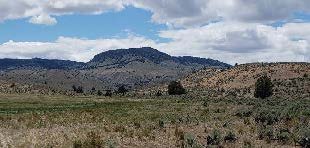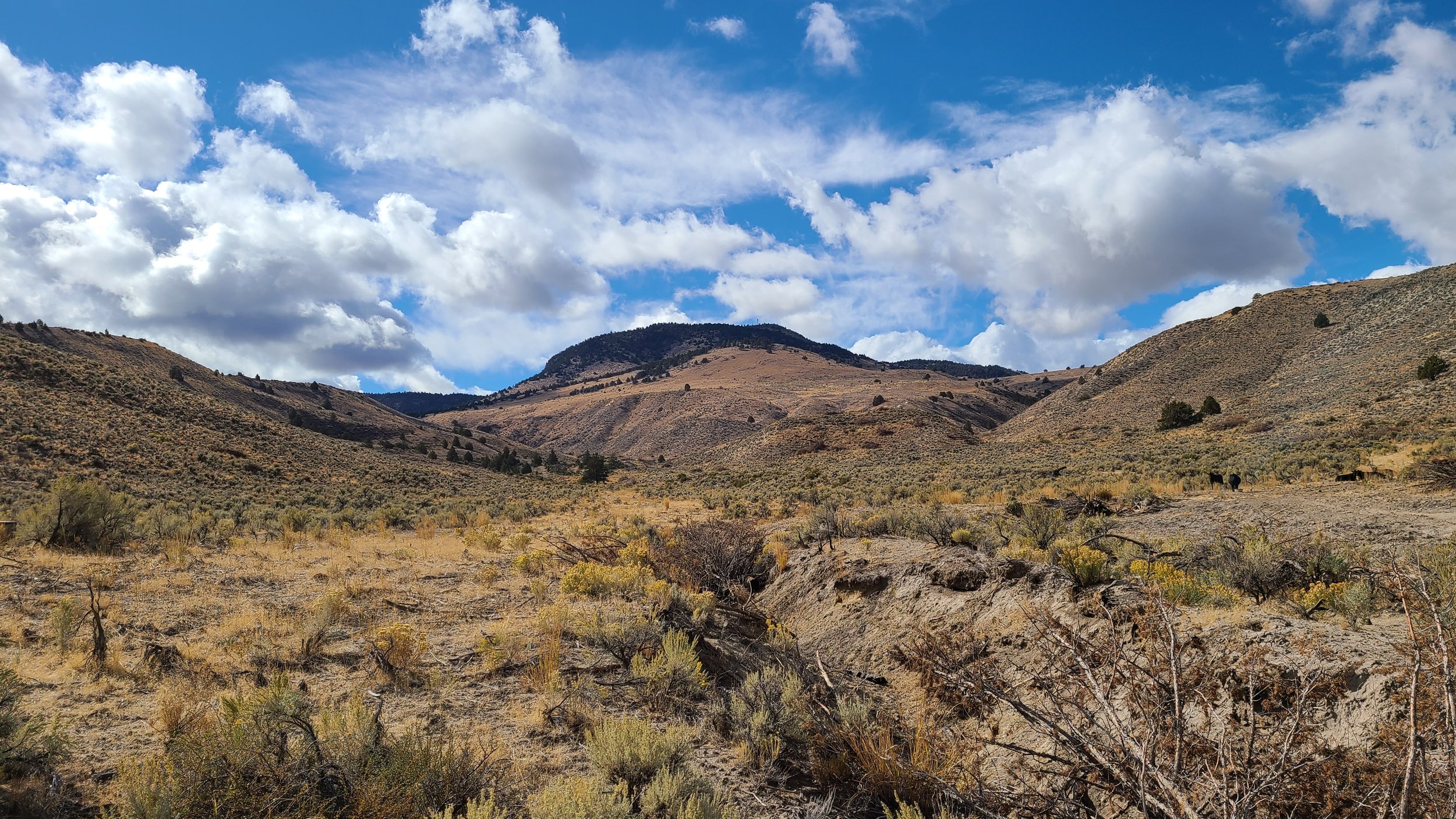Crippling Juniper
Juniper removal is a key component of the Malheur Watershed Council’s overall strategy to improve upland rangeland conditions. The “Crippling Juniper” project was an example of large, multi-faceted project aimed at improving the watershed and protecting valuable Sage-Grouse habitat. Projects like these are a win for landowners, a win for the grouse, and a win for our watersheds. “Crippling Juniper” was a continuation of an ongoing effort by this landowner to improve range health, combat invasive and encroaching species, improve sage grouse habitat, and improve riparian vegetation.
This project boundary is within ODFW’s designated high priority sage grouse habitat. The sage grouse is still a candidate for listing under the Endangered Species Act and perhaps the most important factor in the birds’ decline are changes to the habitat and predation. These birds require large treeless tracts of healthy rangeland that contains sagebrush, bunchgrasses, wildflowers and wet meadows.
Invasions by weedy species such as juniper harm grouse habitat. Junipers provide perches for predators and crowd out sagebrush and native grasses. “In high elevation sagebrush habitat, fire return intervals have increased (from 12–24 to > 50 years) resulting in invasion of conifers and a consequent loss of understory herbaceous and shrub canopy cover.”1
Predators, such as ravens, crows and hawks, use juniper as a perch to prey upon sage grouse, causing grouse to leave an area that becomes too heavily invaded by juniper. Most of these more densely treed areas are along draws so removal would also benefit riparian area conditions.
Wet areas comprise only a small portion of rangelands. However, they are essential to a number of wildlife species. Sage grouse uses a variety of habitats throughout its life span, with riparian and wet meadow areas playing a role in brood rearing. Chicks eat bugs and some forbs as they grow. As the summer season progresses, they spend more time foraging in the wet areas because the vegetation is more succulent and insect populations are higher.2
The importance of late summer brood rearing is becoming clearer to wildlife professionals. Atamian et al. (2010) conducted a study of sage grouse habitat in Nevada. Their conclusion was as follows: “Based on our analyses, high-quality late brood rearing areas should be considered high priority for protection because of the limited amount of high-quality habitat in the study area.”3
Donnelly et al. (2014) found that not only are wet areas important for sage grouse but that most are on private property. “An impressive 85% of leks (sage grouse breeding areas) cluster within six miles of wet summer habitats. These streamside’s, wet meadows, and wetlands compose less than 2% of the western landscape, yet more than 80% fall on private lands. Successful sage grouse conservation will hinge on cooperative conservation with private landowners to sustain these lush and vital summer habitats”.4
Juniper Removal
Juniper was removed from about 1,300 acres Slash from the low-density acres was lopped and scattered and all slash is lower than 4- feet high. The juniper carcasses from the higher density acres were piled and were burned in fall /winter of 2020 and 2021. The piles were placed on rocky spots, because the landowners hope to reduce soil scorching and subsequent weed invasion.
Livestock Distribution
The owners have been using this property for winter grazing, which allows the grasses the entire growing season to produce and drop seed before the next grazing. However, the landowner expressed an interest in using additional fencing as a way to build in more flexible management options.
The cattle were tending to congregate in the lower elevation and flatter sites due to the steep elevation climb in the field, leading to uneven utilization of the field. The solution was to manage cattle distribution through fencing and water development. The ranch has developed water sources at higher elevations. However, the cattle would “out drink” the water source. Thus, they installed more troughs to supplement this existing trough and other existing water sources. They built a pasture crossfence to keep cattle up-slope longer.
Cross fence and water source installed to increasing flexibility in grazing management.
A 10,500 foot cross fence was constructed to improve cattle management. The landowner developed three springs, installed four troughs (one served by an existing well) and laid 3,900 feet of pipe to deliver water to the troughs. With the fence the managers can decide when and how long cattle stay in any one spot. The water has provided an enormous amount of flexibility in grazing management.
Riparian Planting
Healthy riparian vegetation helps improve riparian area health and promote a thriving watershed. Healthy root systems guard against erosion and excessive sedimentation. Plants take up nutrients from rivers and streams directly or provide conditions conducive for nutrient sequestration and removal.
Caged riparian planting
To accelerate riparian vegetation recovery, the land owner planted approximately 100 aspen and cottonwood rooted cuttings and 380 willow cuttings in scattered areas along 5,000 feet of Chimney Creek. Each planting area was protected from grazing by installing 5 foot high livestock panels attached to 5-foot t-post at each corner. At the time of this report survival is about 90%.
The landowners put a great deal of thought into this project and made some decisions that improved the project throughout the process. The Malheur Watershed Council maintains flexibility to work with landowners during project implementation to adjust to changing conditions to still achieve the goals of the project, or go beyond.
This project was part of the landowner’s overall strategy to continue removing juniper and improving the rangeland in this area. They had already removed juniper on over 2,000 acres prior to this project and have plans to continue. They also have plans to implement a rangeland spray program to protect against invasive annual grasses and to establish a juvenile juniper removal strategy.
Project Highlights
Removed juniper from 1,300 acres
Cut slash from lower density sites to below 4 feet and disposed by lop and scattering
Debris from 220 medium-density acres was piles and burned
Built 10,500 feet of cross fence
Developed three springs
Installed four troughs to supply water to all pastures
Installed 3,900 feet of pipe to deliver water by gravity to troughs
Planted approximately 380 willow whips and 100 aspen & cottonwood
Installed 10 wire cages to protect plantings
Sources:
1. Crawford et al. January 2004. Synthesis Paper: Ecology and management of sage-grouse and sage-grouse habitat J. Range Manage.57: 2-1
2. (Crawford et al. 2004, Gregg and Crawford. 2009, Drut et al. 1994).
3. Atamian et al. 2010. Sage-Grouse Brood Rearing Habitat. Journal of Wildlife Management 74(7):1533–1543.
4. Sage Grouse Initiative. 2014. Private Lands Vital to Conserving Wet Areas for Sage Grouse Summer Habitat. Science to Solutions Series Number 4. Sage Grouse Initiative. 4pp. http://www.sagegrouseinitiative.com/.





